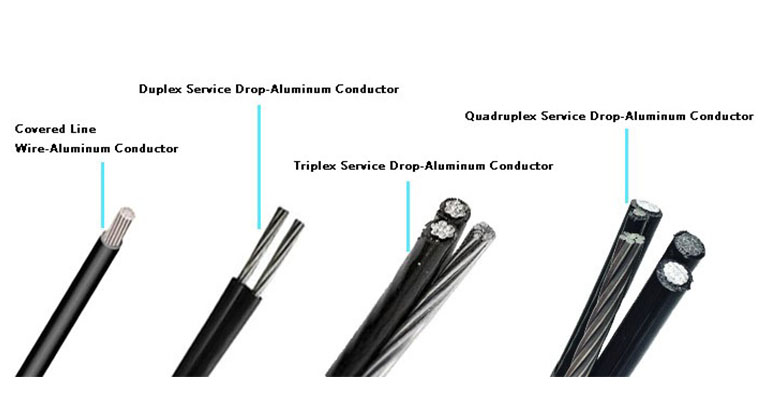- Offices Time:24 Hours Online
- Email:[email protected]
- WhatsApp:+8618339938759

Posted on September 1, 2022
Technical performance of overhead cables
Overhead cables are divided into hanging overhead cable lines and self-supporting overhead cable lines. There are pre-hanging hook method, moving pulley side hanging method, fixed pulley traction method and automobile traction pulley hanging method. Self-supporting overhead cables do not need to set up additional hanging wires and cable hooks, but must use special iron parts for self-supporting types, and the cables can be laid as long as the curved groove splint device is installed. In special environments, overhead cables also need to have special properties. Let’s discuss what technical properties are required for overhead cables in strict environments?
1.Weather resistance
High-voltage overhead cable, in addition to meeting high electrical performance requirements, also requires good weather resistance, so that it can work safely under sunlight for a long time. The existing overhead cable insulating material is made by blending polymer insulating material and a certain amount of carbon black. Because the polymer insulating material can reject the visible light and infrared light that accounts for more than 94% of the energy, so that it cannot penetrate into the interior of the polymer, but there is still a small amount of ultra-ultraviolet light that can penetrate into the interior of the insulation. Molecules crack, and the insulating surface becomes rough or even cracked, eventually destroying the insulation. If more than 2% carbon black is incorporated into the insulation, the invasion of ultra-ultraviolet light can be completely prevented, but this is unfavorable for the electrical insulation performance of the cable. In order to solve this contradiction, the cable insulation is the best weather-resistant cross-linked insulation formula determined after different formulas and repeated tests. officially put into operation.
2.Insulation level
When the overhead cable is used, since the ground voltage is not completely added to the cable insulation, most of the ground voltage is borne by the air medium, so the insulation performance of the overhead cable is higher, and it is obviously better than the ordinary oil paper and Cross-linked cable. Because the lead wrap of the oil-paper cable and the shielding layer of the cross-linked cable are usually grounded, the voltage passed by the cable is completely applied to the main insulation, while the overhead cable is jointly borne by the main insulation and the air medium. Therefore, the relevant standards of various countries stipulate that the insulation thickness of overhead cables should be thinner than that of ordinary cables. At the same time, the insulation quality of overhead cables will not decrease significantly under the action of long-term voltage. Therefore, comprehensively, the insulation performance of overhead cables is relatively high.
3.Inner and outer semi-conductive shielding layers
1KV low-voltage overhead cables do not need an inner semi-conductive shielding layer due to the low electric field strength on the conductor surface. When the overhead cable is close to the grounding body, the electric field strength on the conductor surface of the 10KV overhead cable is 2-3KV/mm, and the electric field strength on the conductor surface of the 35KV overhead cable can be as high as about 5KV/mm, which requires the use of an inner semi-conductive layer. Because the conductor and the insulating layer in the cable are not firmly bonded, the two layers will be separated from each other under the change of temperature. In rainy weather, the separated part is filled with water vapor, which reduces the electrical strength. When dry, the electric strength of air can reach 3KV/mm, while that of wet air is only 0.5-1KV/mm. In this way, when the cable is running under normal conditions, a layer of corona is formed between the conductor surface and the insulating gap, which not only causes corona discharge loss, but also easily destroys the insulating medium. For this reason, in all countries in the world, overhead cables above 10KV use the inner semi-conductive shielding layer of the conductor.
The split-phase single-core overhead cable does not need to use an outer semi-conductive shielding layer, but the three-core braided overhead cable above 10KV must use an outer semi-conductive shielding layer. Because the external electric field of the three-core braided overhead cable is uneven, if there is no outer semi-conductive shielding layer, a strong corona discharge will be generated when the air is humid.
Post categories
Most Popular Posts
-
The 136th Canton Fair welcomes you to participate!
October 12, 2024 -
High temperature cable introduction
July 26, 2024 -
Kenya Power and Energy Exhibition 2024
June 11, 2024 -
Introduction of rubber sheathed cable
June 5, 2024





